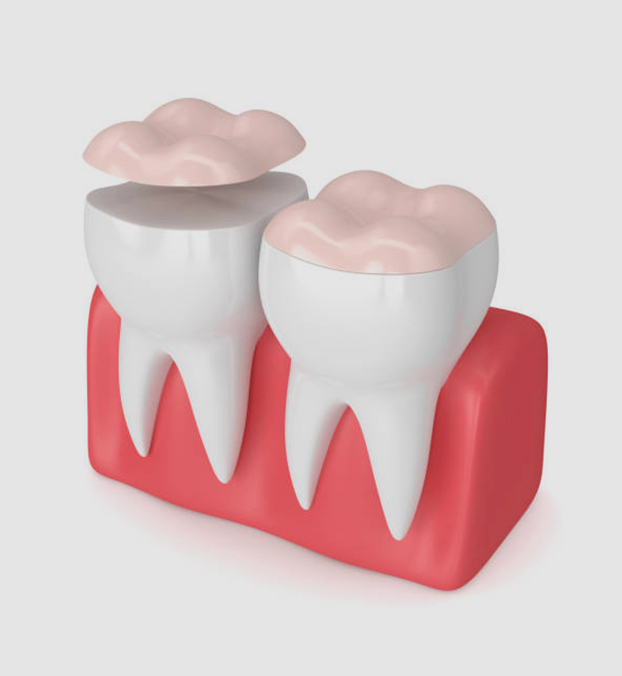Dental Inlays and Onlays

Repair Your Teeth with Inlays or Onlays
If you are unhappy with the look of your old fillings, consider new tooth-colored treatments to rejuvenate your smile. Silver and gold fillings are outdated, and inlays and onlays are now a popular and effective alternative. These treatments are similar to traditional fillings but are made of tooth-colored materials for a more natural appearance.
Inlays and onlays are a great option for replacing old fillings, as the cavity has already been addressed. This makes the treatment quicker, easier, and less painful. Not only do inlays and onlays provide a more sustainable solution, but they also result in a more aesthetically pleasing smile.
If you are interested in inlays and onlays, visit Cedar Grove Dental Group in Cedar Grove. Our team can help determine if this treatment is right for you. Contact us at (973) 857-0567 to schedule an appointment.
What are Inlays and Onlays?
Inlays
In the past, inlays were used to replace a small amount of tooth structure left by a cavity, similar to fillings, but were only made of gold. Nowadays, inlays are made of tooth-colored materials like ceramic, porcelain, or a specialized dental composite.
The inlay is composed of tooth-colored material and bonding, a clear fluid material, used to attach the inlay to the tooth. According to the American College of Prosthodontists, using a clear fluid version of this material to seal the exposed surfaces of the teeth can reduce sensitivity to temperature changes and certain types of foods. The bonding material is also tooth-colored and can help improve the color and appearance of stained or discolored teeth.
Onlays
Onlays are similar to inlays in that they fill a hole caused by a cavity, but onlays extend onto the chewing surface of a tooth to replace one or more cusps. While traditionally made of gold, tooth-colored onlays are now available. Onlays are recommended for patients with large cavities or decay that extends over the top of the tooth.
Both inlays and onlays involve bonding material to attach and seal it to the tooth, which can actually improve the strength of the tooth.
“An onlay is considered a more effective option for patients who have large cavities or the decayed area expands over the top of the tooth.”
Inlay or Filling
Inlays are a popular cosmetic treatment that can replace old fillings. Patients now have the option to choose between a filling or inlay when treating a cavity. By using an impression of the cavity, we ensure that the inlay is the exact size and shape, strengthening the tooth rather than weakening it like other options may do.
Due to their appearance, inlays are becoming more popular and fillings are rarely requested. However, in cases where a patient is allergic to the inlay material, a dentist may resort to using a filling instead. Special dental materials can also be used as inlays to provide the patient with the highest level of comfort.
“Inlays are formulated using an impression of the cavity and are fabricated to the exact size and shape of the cavity as opposed to being filled in.”
Onlay vs. Crown
“The key distinguishing factor a dentist will use to determine the right choice for a patient is the size of the cavity.”
Benefits of Inlays and Onlays
Inlays
Onlays
“Before an inlay treatment, the dentist removes all bacteria from inside the tooth and throughout the hole, attaining a higher level of oral hygiene.”
Comparing Inlays, Onlays, and Veneers
Veneers are custom coverings placed on the front of teeth for cosmetic purposes, not for protection or treatment. Before applying a veneer, the dentist will shave down the tooth to make room for the veneer. Veneers are irreversible, so if one becomes damaged, the patient will have a cracked or missing tooth until it is fixed.
Inlays and onlays, on the other hand, are used to save and protect teeth from further damage with specialized dental material. They seal the tooth and surrounding area, making it easier to maintain oral health and prevent decay. Veneers, like crowns and caps, are primarily used for cosmetic purposes to cover up damaged or decayed teeth.




